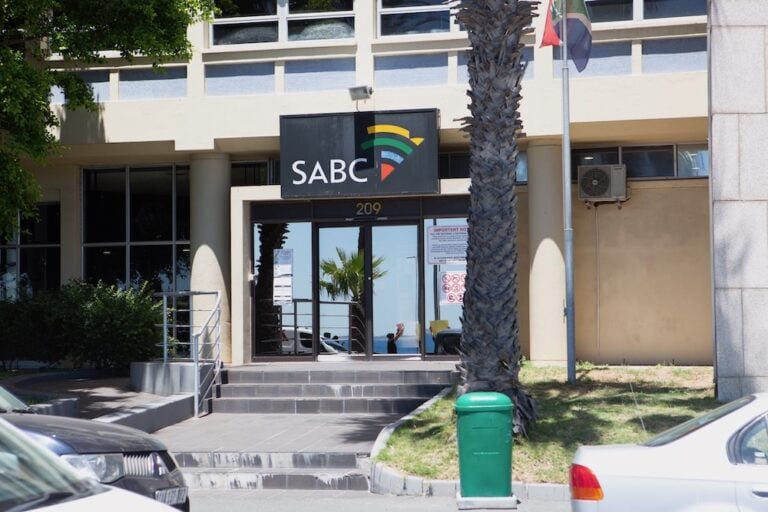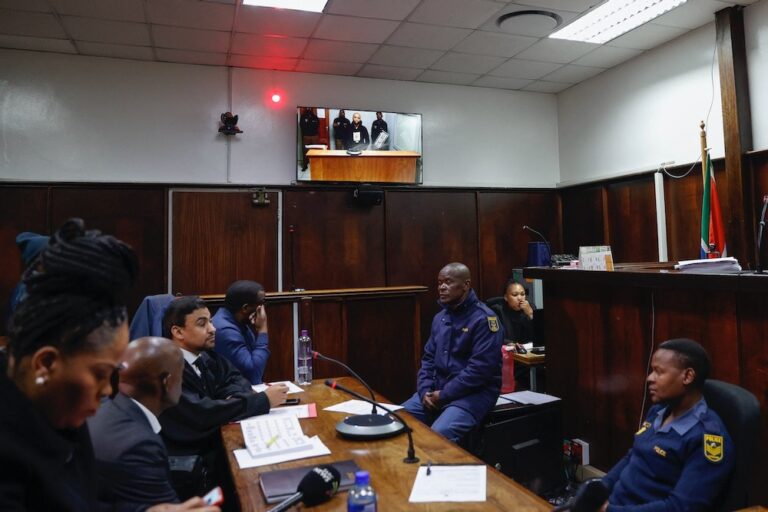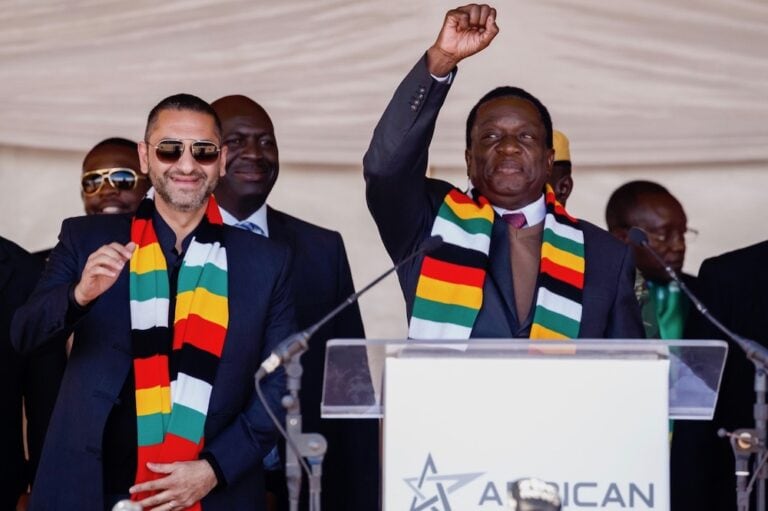A photographer for "The Times" newspaper was hit by a rubber bullet when Durban police fired into a crowd of protestors.
“Tough luck” says police spokesperson
Police officer on scene said “go home and put ice on it,” injured newsman tells IPI
(IPI/IFEX) – Vienna, 2 September. A photographer for South Africa’s the Times newspaper was hit by a rubber bullet on Sunday when Durban police fired into a crowd of protestors.
Tebogo Letsie was covering an Inkatha Freedom Party (IFP) rally in central Durban, which turned ugly when two rival factions within the party clashed.
Police spokesperson Vincent Mdunge told the International Press Institute (IPI) by phone that special forces were called in when tensions between the two factions began to rise.
The Public Order Police, which specializes in crowd control, then deemed the confrontation “potentially life-threatening.” After issuing a “clear warning” to demonstrators to leave, police began to throw stun grenades, which produce a loud bang.
According to Mdunge, officers then issued another verbal warning. Afterwards they decided to intervene with “minimal force,” firing rubber bullets to disperse the crowd.
One rubber bullet, fired at close range, hit Letsie in the ribs just below his armpit. None of his ribs were broken, but he told IPI that he suffered “massive swelling” and had to be treated in hospital. “The pain was unbearable,” he said.
Letsie alleged that the situation was poorly handled. “I was adjacent to the police and highly visible with my big camera when I got shot,” Letsie told IPI. He noted, “You cannot shoot somebody who is three feet away and say it was an accident.”
A police officer filming the demonstration then told the wounded journalist to “go home and put ice on it,” Letsie alleged.
Letsie also claimed that the police showed “no remorse” and “no intention to call an ambulance.” A photographer from the Mercury newspaper, Puri Devjee, told IPI he saw Letsie and came over to ask if he needed help. Devjee then phoned for medical help, and an ambulance arrived a few minutes later.
According to Devjee, police did not seem to notice the injured journalist, although they afterward made way for the arriving ambulance. Letsie was taken to St. Augustine Hospital for treatment.
The Durban police force blamed Letsie for the incident. “This journalist was more interested in taking a picture than protecting his life,” Mdunge told IPI.
“I don’t really think the officers aimed for him in terms of hurting him,” Mdunge said. “But if (Letsie) put himself in the way, tough luck.”
Mdunge also pointed out that the officers at the scene did call for ambulances to help injured demonstrators, including the journalist. The police spokesperson maintained: “Our officers are responsible people that were there to protect life and the rule of law.”
“The International Press Institute (IPI) calls on the South Africa police force to investigate this unfortunate incident,” says IPI Director David Dadge. “Law enforcement officers must realize that journalists and photographers at demonstrations are carrying out a vital role in reporting such activities on behalf of the public. Police have a duty to distinguish between journalists who are reporting and demonstrators who they believe may be committing an offense.”
IPI asked Letsie if he intends to file a complaint or pursue legal action against the police force. “No,” he replied. “These kinds of cases drag and drag and expend all your energy.”


